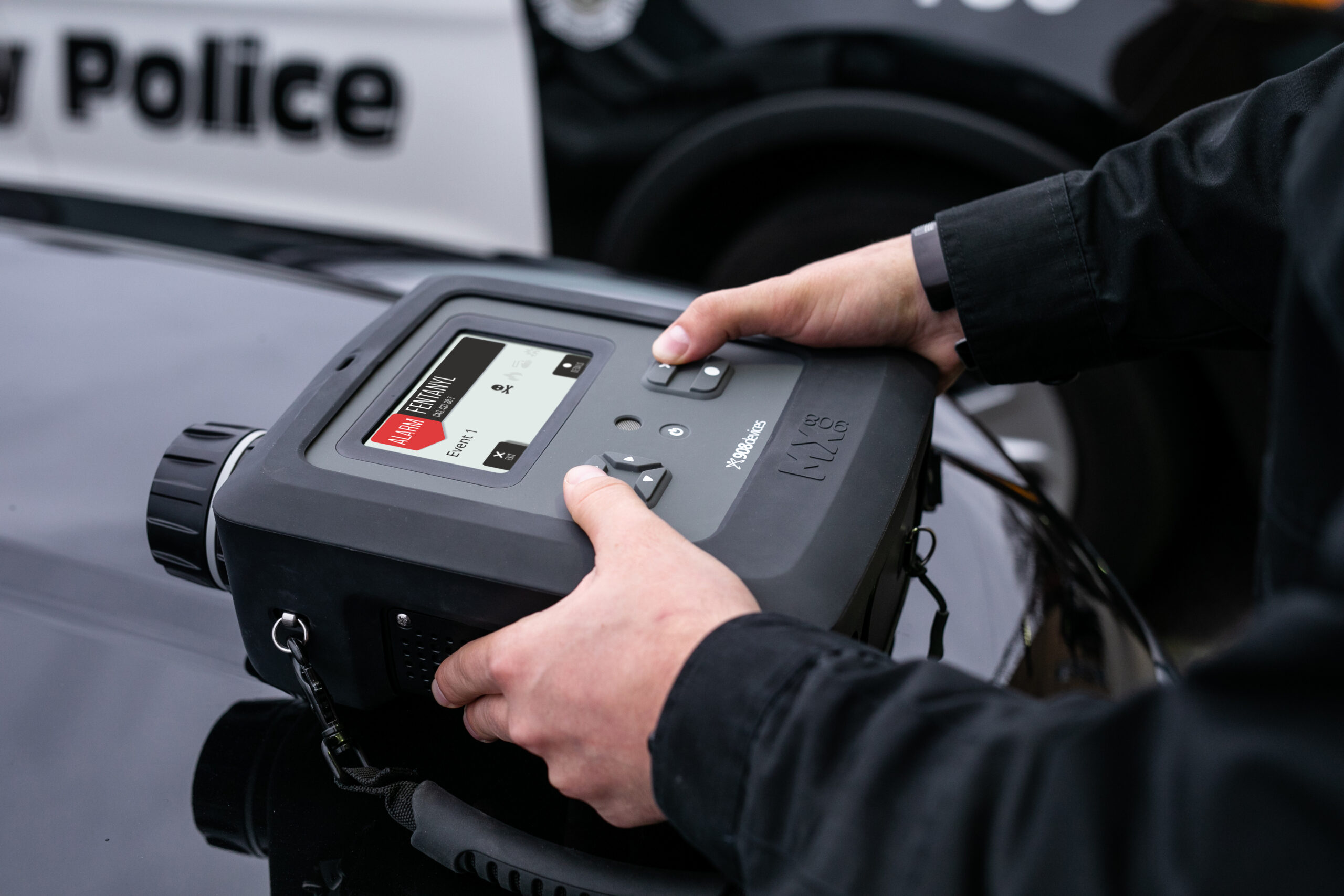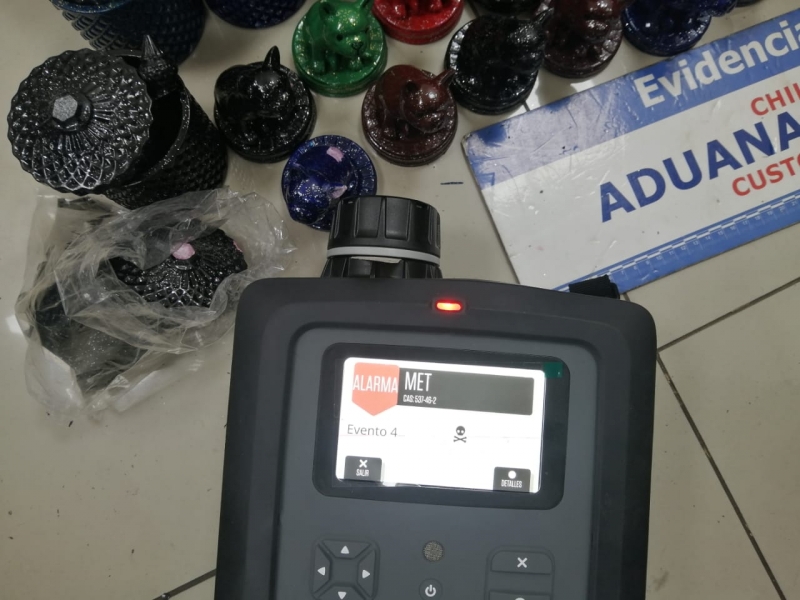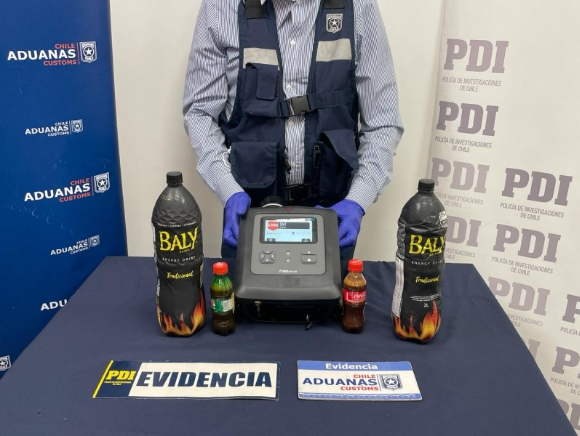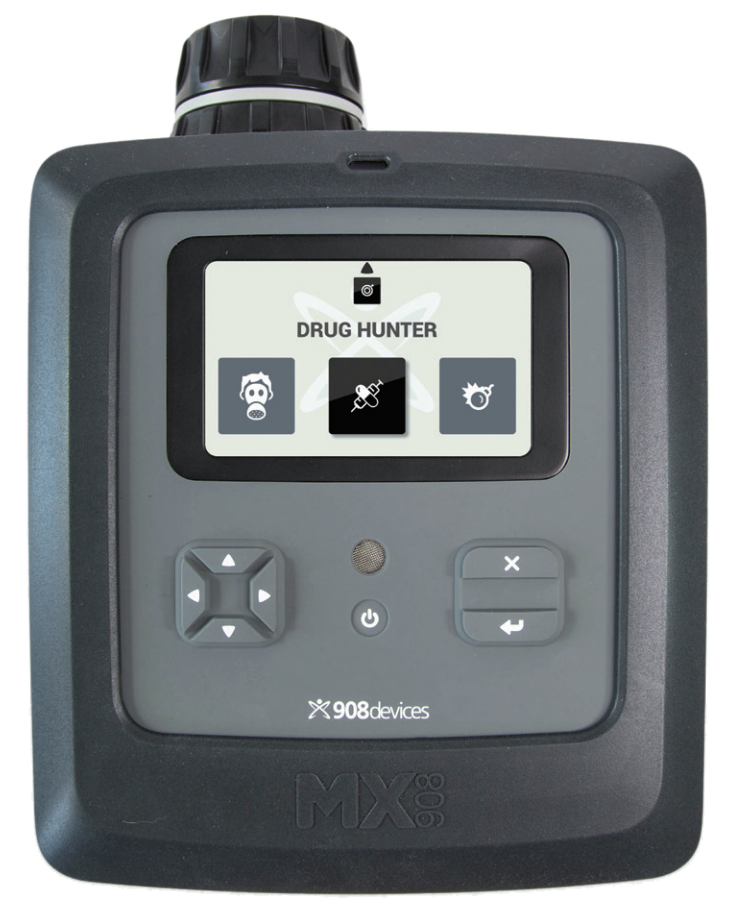Chilean Border Agents Foil Multiple Narcotics Smuggling Attempts with MX908
Explore how advanced detection technology is helping stop drug smuggling at airports through real-world case studies from Chilean customs.

Discover How Chilean Customs Are Outsmarting Drug Traffickers at Airports
Drug traffickers are constantly evolving their smuggling tactics—hiding narcotics in luggage, clothing, even inside the human body. More recently, they’ve started concealing drugs within powders and liquids to evade traditional detection methods. But Chile’s customs authority, Aduanas de Chile, is staying one step ahead. Using the cutting-edge MX908 high-pressure mass spectrometer, their teams are identifying hidden narcotics faster and more accurately than ever before—even when disguised in the most deceptive ways. This case study highlights three separate scenarios to see how the MX908 is helping frontline agents crack down on complex smuggling attempts and keep dangerous substances out of the country.
Drug traffickers use a range of methods to smuggle narcotics through airports, including hiding them in luggage, clothing, and even within the human body. Increasingly, traffickers are concealing drugs within other substances, such as powders and liquids, to evade detection and bypass certain law enforcement technologies.
The MX908 high-pressure mass spectrometer has proven to be a valuable tool in countering these tactics. The following real-world case studies from Aduanas de Chile, the Chilean customs authority, demonstrate how officials are using the MX908 to quickly and accurately identify narcotics at ports of entry.
Case 1 – 28 kilos of Ecstasy in a Painting


During routine inspections, Chilean Metropolitan Regional Customs’ K-9 unit flagged a print of a renowned painting of Bernardo O’Higgins, Chile’s “Father of the Nation,” for further examination. Shortly thereafter, customs officers employed the MX908 to confirm the presence of MDMA, preventing its illicit transport.
The shipment, originating from Belgium, was subjected to closer scrutiny after trained canine units detected the presence of a suspicious substance. Upon further investigation, customs officers searched the artwork, revealing the concealed narcotics.
The substance was analyzed using the MX908 in Drug Hunter Mode, which verified it as MDMA. Rodrigo Díaz, Regional Director of Metropolitan Customs, underscored the agency’s multi-layered approach to combating drug trafficking.
“Our National Customs Service utilizes a combination of experienced personnel, advanced non-invasive technology, and the exceptional detection capabilities of our K-9 units, which play a vital role not only at the airport but across the country,” he stated.1
Case 2 – 4.9kg of Methamphetamine in Animal Figurines

At first glance, an incoming package appeared to contain ordinary gifts sent from Mexico to a residence in Valparaíso, Chile. However, customs officials had previously been alerted to the use of 3D-printed objects as a method for concealing narcotics. Upon opening the package, they found 28 3D-printed animal figures. Suspecting that the objects might be used to smuggle illicit substances, officers utilized the MX908 to analyze the outside of the objects for trace amounts of narcotics.
The MX908 is capable of detecting drug substances at nanogram levels (1 nanogram = 1 billionth of a gram) in under a minute, making it an invaluable tool for customs enforcement. Officers can quickly obtain results, often by simply swabbing the exterior of a package or, as in this case, a 3D-printed object containing hidden drugs.
The MX908 rapidly returned a positive result for methamphetamine, confirming officials’ suspicions. María José Rodríguez, Regional Director of Metropolitan Customs, highlighted the importance of both expertise and technology in drug interdiction:
“In this case, it is the experience of our Drug Department officials that raises red flags on shipments that might otherwise appear harmless. At the same time, the advanced technology at our disposal allows us to quickly and conclusively confirm the presence of illicit substances in shipments entering Chile.”2
Case 3 – 4 Bottles of Liquid Ayahuasca (DMT)

During a routine inspection, Chilean Customs officials identified a traveler from Brazil carrying four bottles of an unidentified brown liquid in their backpack. Suspecting potential contraband, they alerted the drug enforcement unit, which utilized the MX908 to analyze the substance. The MX908 quickly identified the liquid as DMT (dimethyltryptamine), a powerful hallucinogen commonly associated with Ayahuasca.
The MX908 is uniquely capable of identifying chemicals in all phases of matter, including solids, liquids, gases/vapors, and even aerosols. Its advanced detection technology allows it to identify substances at trace levels, even when narcotics are dissolved in liquid. This capability enables law enforcement officers to reliably detect and confirm the presence of illicit drugs with precision and efficiency.
The passenger, along with the seized substances and backpack, were handed over to law enforcement for further investigation. Rodrigo Díaz, Regional Director of Metropolitan Customs, emphasized the effectiveness of swift intervention:
“The inspector immediately identified suspicious elements in the backpack and raised the alert. This allowed us to prevent the passenger from leaving the airport with Ayahuasca (DMT), a prohibited substance due to its severe effects on individuals.”3
Result
These three cases highlight some of the increasingly sophisticated methods used by drug traffickers to smuggle narcotics and the critical role of advanced detection technologies in countering these threats. From concealing MDMA within a framed painting to embedding methamphetamine in 3D-printed figurines and dissolving DMT into a liquid for smuggling, traffickers continue to adapt their tactics to evade detection.
The successful interdiction of these shipments demonstrates the effectiveness of the MX908 high-pressure mass spectrometer in identifying illicit substances quickly and accurately, even in trace amounts. Its ability to analyze substances in any form at trace levels provides customs officials with a powerful tool to combat drug smuggling at ports of entry.
Coupled with the expertise of customs personnel, trained K-9 units, and advanced non-invasive screening methods, the MX908 enhances Chilean Customs’ ability to prevent narcotics from entering the country. As traffickers refine their concealment strategies, cutting-edge technology and vigilant enforcement will remain essential in safeguarding borders and disrupting illicit drug networks.
Reference
- Patriotic discovery: O’Higgins’s body was carrying 28 kilos of ecstasy. https://www.aduana.cl/patriotico-hallazgo-en-cuadro-de-o-higgins-transportaban-28-kilos-de/ aduana/2025-03-07/115346.html. 2025.
- Airport prevents entry of methamphetamine in 3D-printed animal figures. https://www.aduana.cl/en-aeropuerto-evitan-ingreso-de-metanfetamina-en-figuras-de-animales/ aduana/2024-03-15/111420.html. 2024.
- Customs surprises passenger entering Merino Benítez Airport with more than 5 liters of ayahuasca. https://www.aduana.cl/ aduanas-sorprende-a-pasaiero-ingresando-con-mas-de-5-litros de-ayahuasca/aduana/2024-02-27/082343.html.2024.

Subscribe to Our Communications
Signup to receive new product updates, technical tips and more.